Our Services
Oral Health Promotion
Preventive dentistry is the practice of caring for one's teeth to keep them healthy before disease occurs. This helps to avoid cavities, gum disease, enamel wear, and many other abnormalities in the oral cavity. Preventive dentistry can be as simple as following good oral hygiene practice such as daily brushing, flossing and routine dental cleanings and examinations. Especially, our children should be taught proper oral hygiene at an early age so that it becomes part of their oral health care routine and they develop good oral hygiene habits. Fluoride treatment is a good example of practicing preventative dentistry for young growing children at high caries risk, medically compromised patients and people with dry mouth.
Oral health is connected to our body health as a whole. This is because the mouth is a breeding ground for harmful bacteria. Maintaining a clean and healthy mouth benefits overall health. Eating a well-balanced diet also helps to protect the teeth as well as our body from insults by providing them with all the nutrients they need to stay healthy physically and mentally.
With good dental hygiene, patients greatly reduce their risk of getting cavities, gingivitis, periodontitis, and other dental problems. This, in turn, can reduce the risk of secondary problems caused by poor oral health. Please ask us more about how we can help achieve optimal oral health.
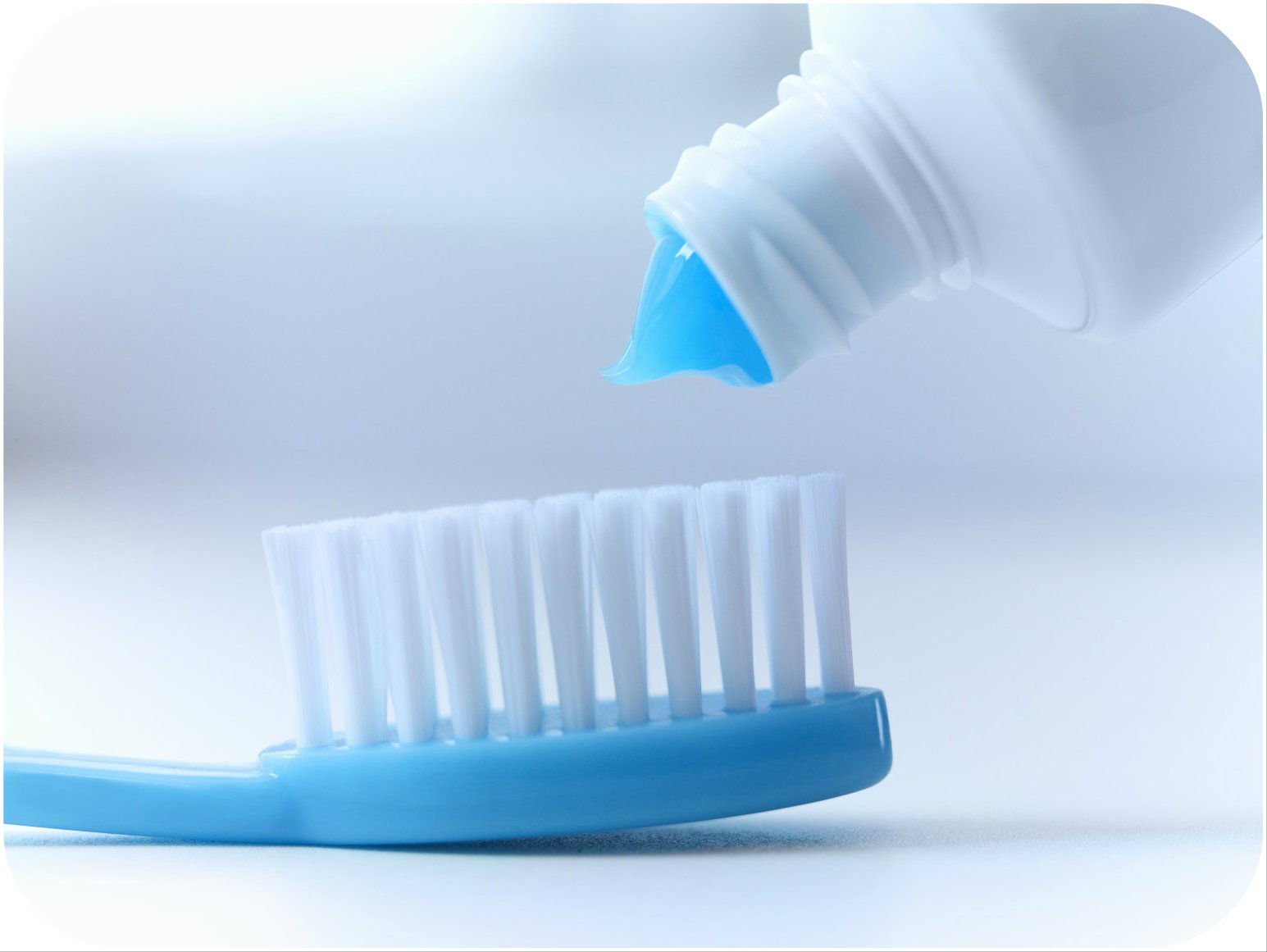
Digital Radiographs
At Main Street Dental, we use a digital dental radiograph imaging system by Sirona. Digital radiography is a type of X-ray imaging that uses digital X-ray sensors to replace traditional photographic X-ray film, producing enhanced computer images of teeth, gums, and other oral structures and conditions.
Digital dental radiographs can be taken inside or outside the mouth. Intraoral X-rays, the most commonly taken dental X-ray, provide great detail and are used to detect cavities, check the status of developing teeth, and monitor teeth and bone health. Extraoral X-rays are often used to detect impacted teeth, monitor jaw growth and development, and identify potential problems between teeth, jaws and temporomandibular joints (TMJ), or other facial bones.
Radiation exposure is quite low with digital radiographs. Protective lead aprons and thyroid collars are used on all patients to take precaution. It is very safe to have dental radiographs taken and we take great care that no one receives more radiation than what is absolutely necessary to meet standard of care. We advise that women who are pregnant, trying to become pregnant or breast-feeding delay dental radiographs unless it is an emergency situation.
Benefits of digital dental radiographs to the traditional ones:
♦ Digital radiographs viewed instantly on the computer monitor.
♦ Early detection and treatment of dental diseases made possible.
♦ Eliminate chemical processing and disposal of hazardous wastes and lead foil, thereby presenting an eco-friendly alternative.
♦ Transferred easily to other dental/medical professionals without image quality loss.
♦ 50 to 80 percent less radiation than the traditional film.
♦ Features such as contrast, colorizing, 3-D, sharpness, flip, invert and zoom enhance detection and interpretation during diagnosis.
♦ Great patient education tool.
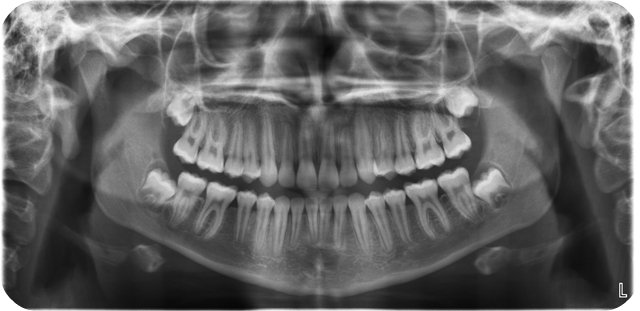
Periodontal Treatment
Periodontal disease ranges from transient gum inflammation to serious disease that results in major damage to the soft tissue and bone that supports the teeth. People usually don’t show signs of gum disease until they are in their 30s or 40s. Men are more likely to have gum disease than women. Most commonly, gum disease develops when plaque is allowed to build up along and under the gum line and the host immune response is susceptible to the disease.
Our mouths are full of bacteria. These bacteria, along with mucus and other particles, constantly form a sticky, colorless “plaque” on teeth. Plaque that is not removed can harden and form “tartar” that routine tooth brushing does not rid of. The longer plaque and tartar are present on teeth, the more harmful they become. The bacteria cause inflammation of the gums and that is called “gingivitis.” In gingivitis, the gums become red and swollen, and can bleed easily. Gingivitis is a mild form of gum disease that can usually be reversed with diligent daily brushing and flossing, and/or by professional dental scaling by a dentist or dental hygienist.
Gingivitis may advance to a condition called “periodontitis” which means that there is inflammation around the tooth. In periodontitis, gums pull away from the teeth and form pockets that become infected. The body’s immune system fights the bacteria as the plaque spreads and grows below the gum line. When the immune status of the host is compromised and the effectiveness of the host response is reduced, bacterial toxins and their by-products to the infection start to break down the bone and connective tissue that hold teeth in place. If left untreated, the bones, gums and tissues that support the teeth can be deleteriously affected, leading to tooth/bone loss as a result.
Treatment for gum disease:
♦ Professional dental cleaning
♦ Scaling and root planing
♦ Flap surgery/pocket reduction surgery
♦ Bone grafts
♦ Soft tissue grafts
♦ Guided bone/tissue regeneration
♦ Bone surgery

Laser Treatment
The diode laser represents one of the exciting advancements in cutting-edge dental technology today. The soft tissue laser has gained considerable popularity among dentists and patients alike due to its sophisticated and minimally invasive nature of the therapy as well as accelerated healing, less discomfort during and after the procedure, and fewer post treatment complications.
A laser is a technology that produces a powerful beam of light that can be used to affect and heal soft tissues in the body. We used EPIC™ 10 diode laser from Biolase, the leading dental laser manufacturer and distributor in the world. It has a broad range of applications, which includes:
♦ Removal and reshaping of the gum tissue
♦ Bacterial decontamination in the periodontal pockets
♦ Removal of disease epithelial lining during periodontal surgery
♦ Clinical crown lengthening
♦ Tissue retraction during restorative procedures
♦ Treatment of ulcers in the mouth and around the lips
♦ Recovery of dental implants
♦ Biopsy and removal of benign oral tumors
♦ Frenum release
♦ Exposure of soft tissue impacted teeth
♦ Hemostasis
♦ Tooth whitening
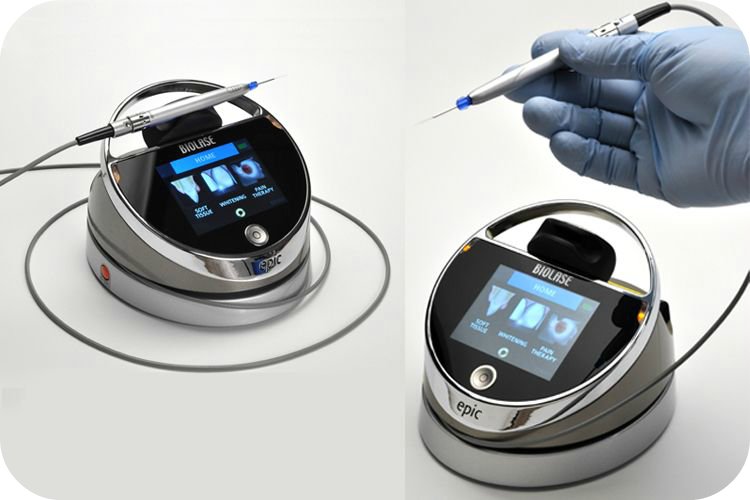
Pediatric Care
As parents, you have a big role to play in keeping your child's teeth healthy and clean. Prevention starts at home, with good eating habits and proper daily cleaning of the teeth. According to the Canadian Dental Association (CDA), it is recommended that the dental examination of infants is done by a dentist within 6 months of the eruption of the first tooth or by one year of age. Our goal is to have your child visit the dentist before a problem occurs thus encouraging prevention rather than treatment. A dental examination is usually done every 6 months for children not only to promote good oral and dental health but also to monitor normal skeletal growth of their jaw bones. The examination may include dental radiographs to aid detection of abnormal findings that cannot be seen by a clinical examination alone. Please ask us for more information about your children’s dental needs and concerns.

Composite Filling
Dental composite fillings are a mixture of powdered glass and plastic resin. They are sometimes referred to as white, plastic, or tooth-colored fillings. They usually consists of a resin-based oligomer matrix, such as a bisphenol A-glycidyl methacrylate (BIS-GMA) or urethane dimethacrylate (UDMA), and an inorganic filler such as silicon dioxide (silica). The filler gives the composite wear resistance as well as translucency.
The composite resin is used for fillings, inlays, veneers, partial and full crowns, or to repair portions of broken teeth. The durability of any dental restoration is influenced not only by the material it is made from but also by the dentist’s technique when placing the restoration. Other factors include the supporting materials used in the procedure and the patient’s cooperation during the procedure. The longevity of a restoration depends upon inherent properties of the materials used, patient’s overall health, dental hygiene, home care, and diet and chewing habits.
Advantages:
♦ Strong and durable
♦ Tooth colored/Improved esthetics
♦ Single visit for fillings
♦ Resistance to breakage/Insulation from extreme temperature changes
♦ Maximum amount of tooth preserved (conservative tooth removal)
♦ Small risk of leakage if bonded only to enamel
♦ Does not corrode
♦ Generally holds up well to the chewing forces
Diadvantages:
♦ Technique sensitive to the dentist’s method of application
♦ Shrinkage over time, leading to recurrent decay and/or temperature sensitivity
♦ May wear faster than the tooth enamel
♦ May leak over time when bonded beneath the layer of enamel
♦ Staining around the filling margin over time
♦ Higher costs than the amalgam fillings

Inlay / Onlay
Dental inlays/onlays are another type of dental restorations that provide a conservative alternative to full coverage dental crowns. Also known as indirect fillings, inlays and onlays offer a superior fit, stronger and longer lasting reparative solution to tooth decay or damage to the natural dentition. These restorations are tremendously beneficial due to their excellent functional longevity and esthetics.
Dental inlays/onlays are another type of dental restorations that provide a conservative alternative to full coverage dental crowns. Also known as indirect fillings, inlays and onlays offer a superior fit, stronger and longer lasting reparative solution to tooth decay or damage to the natural dentition. These restorations are tremendously beneficial due to their excellent functional longevity and esthetics.
Advantages:
♦ Superior fit
♦ Highly esthetic when porcelain/lithium disilicate/zirconia material used
♦ Structural strength and stability
♦ Ease of maintenance
♦ Tight seal
♦ Protection of undermined teeth
♦ Greater longevity
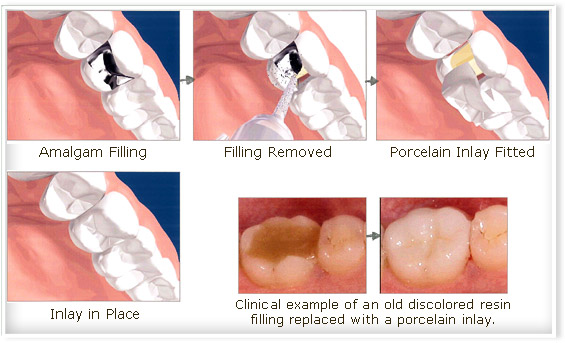
Veneers
Veneers (often made of ceramics or composite resin) are very thin shells of tooth-coloured materials. They usually cover the entire front part of the teeth as they wrap around the edges. Porcelain veneers are stronger and less likely to get stained over time than the composite resin veneers. Veneers take at least two dental appointments to complete since they are fabricated indirectly at a dental laboratory after taking a mold of your teeth.
They are routinely used to repair teeth that are discolored, worn down, chipped/broken, slightly misaligned, irregularly shaped and with spacing between teeth. Although many patients enjoy the minimal invasiveness of the procedure and the exceptional esthetics of the veneers, not everyone is a good candidate. A thorough examination and a complete set of treatment options are necessary prior to commencing such procedure. If you have parafunctional habits such as grinding and clenching, veneers may not be the most suitable option for restoration. A lot of patients enjoy the beautiful smile veneers can deliver and there is no doubt that this treatment is going to be one of the most sought after dental procedures in esthetic dentistry.

Crowns / Bridges
Both crowns and bridges are fixed dental prosthetic restorations. Unlike removable prostheses such as dentures, crowns and bridges are permanently cemented or bonded onto existing teeth or implants, and can only be removed by a dentist. A dental crown is a tooth shaped cap that is placed over a tooth to restore its shape and size, strength, and to improve its appearance. They protect a weak tooth from fracture and restore an already broken tooth or a tooth with severe wear. Dental crown is a great restorative option when a large filling cannot support the chewing force, the tooth is unsupported/undermined structurally and the tooth has had root canal treatment. In addition, they are often used for cosmetic improvement and to cover a dental implant.
A bridge may be recommended if you're missing one or more teeth. Spaces left by missing teeth eventually cause the neighboring teeth to rotate or shift into the empty space, resulting in misalignment and malocclusion of the dentition. The imbalance caused by missing teeth can possibly contribute to gum disease and temporomandibular joint (TMJ) disorders. Bridges can span the space where the teeth are missing. Natural teeth or implants surrounding the empty space are called abutments and they serve as anchors for the bridge. A replacement tooth, called a pontic is attached to the crowns that cover the abutments. As with crowns, you have a choice of materials for the bridge.
Types of dental crowns/bridges:
♦ Stainless Steel
♦ Precious metal (e.g. gold, palladium)
♦ Porcelain fused to metal
♦ Acrylic
♦ Resin
♦ Ceramic/Porcelain
♦ Lithium disilicate
♦ Zirconia
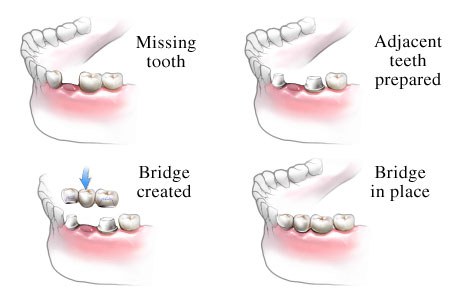
Root Canal Therapy
Root canal therapy, also known as endodontic treatment, is the process of removing infected, injured or dead pulp from your tooth. It usually takes one to two appointments to complete the procedure. The root canal system contains soft dental pulp made up of nerves and blood vessels that help your tooth grow, develop and nourish. When bacteria enter your tooth through deep cavities, cracks or flawed fillings, your tooth can become abscessed and the root canal therapy is warranted to eliminate infection and salvage the tooth. The pulp may also become non-vital due to aforementioned reasons as well as trauma to the face and/or dentition and non-vital teeth require root canal therapy.
If the root canal system is deemed complicated and the management of the case is challenging, you may be referred to an endodontist. It is important to note that upon completion of the root canal therapy, your tooth needs to be permanently restored to its full function and esthetics as soon as possible to prevent further damage to the remaining compromised tooth structure and to maintain optimal occlusion.
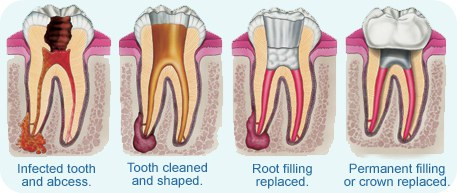
Tooth Whitening
Tooth whitening or bleaching is an effective way of brightening the natural colour of your teeth without removing any tooth structure. This has become one of the most common procedures performed in cosmetic dentistry today as it can drastically improve the esthetics of your smile with minimal intervention. Although there are many different methods available to whiten your teeth, professional in-office bleaching is the most effective form of tooth bleaching. The results from tooth whitening can vary from person to person, lasting up to three years. Please ask our dental team about scheduling a consultation appointment if you are interested in starting the treatment.

Orthodontics / Invisalign
People of any age can benefit from orthodontic treatment. Orthodontic treatment not only improves the look of your smile but also the function and health of your dentition. In some cases, it is helpful to start orthodontic treatment before all the permanent (or adult) teeth come in. This is called interceptive orthodontics. The position of the teeth and jaw bones as well as the shape of dental arch play important role in proper occlusion. In addition, the temporomandibular joints (TMJ) need to be healthy and be aligned with their surrounding disc assembly for successful orthodontic outcome. If you have any unfavorable oral habits such as thumb or finger sucking, they need to be corrected prior to commencing orthodontic treatment.
We focus on achieving a well-balanced skeletal relationship for the face and facial profile for optimal orthopedic and orthodontic results. Orthodontic treatment can take time. The amount of time depends on your age, the extent of the malocclusion and the treatment technique used. There are various types of orthodontic appliances, from fixed metal braces to removable clear plastic aligners. Please ask us about how orthodontic treatment can help improve your smile!
Invisalign® is manufactured by Align Technology, a multinational medical-device company headquartered in San Jose, California. It uses a custom-designed series of virtually invisible plastic aligners to wear over your teeth. Wearing the aligners will gradually and gently shift your teeth into place, based on the exact movements your dentist plans out for you. There are no metal brackets to attach and no wires to tighten. This is a popular alternative to the fixed metal or ceramic braces among adult patients because most people won't notice that you are wearing orthodontic appliances. Please ask us about whether Invisalign treatment is right for you.

Botox
Botulinum toxin (Botox, onabotulinumtoxinA) is a material that has been known for over a century and used for medical purposes for more than 50 years. Its initial uses were for lazy eye (strabismus), blepharospasm (inability to move the eyelids in certain ways), and wry neck (cervical dystonia). In 2002, it was approved for improving and relaxing frown lines in the area (the glabella) between the eyes on the forehead and has been used successfully in more than over 11 million patients since that time, based on estimates from data supplied by the Allergan Corporation. In 2004, Botox was approved for excess sweating (hyperhidrosis), and in 2010, Botox was approved for the treatment of migraines.
A common misconception is that Botox actually paralyzes the muscles in the face. Although, this can happen with extreme amounts of Botox, most dentists inject just the amount that allows the patient to have some limited activity but not so much that they have over activity of the areas. Patients should know that Botox is not used to keep them from expressing themselves but simply to keep them from making facial grimaces and frowns that have become habits and are unintended. When done correctly, most people will not notice that a Botox procedure has been performed but simply that the patient looks more rested or happier. Please ask us how we can help with enhancing your facial esthetics with Botox treatment.

Full Mouth Reconstruction
Full mouth reconstruction or full mouth rehabilitation are terms to describe the process of simultaneously restoring most, if not all, of the teeth in both the upper and lower jaws. Full mouth reconstruction typically involves general dentists or prosthodontists although it can incorporate other dental specialists such as periodontists, oral surgeons, orthodontists and endodontists in order to achieve optimal outcome and prognosis.
As there are increasing patient demands for beautiful and natural-looking esthetic dentistry, it is becoming difficult to draw a line between purely esthetic dentistry (elective treatment) and restorative dentistry (functionally necessary). In some cases, patients are in need for both functional and esthetic restorations and improvement. It is important to note that a smile makeover – though performed primarily to improve the esthetic appearance of the smile – requires the use of clinically proven dental materials and treatment techniques, as well as exceptional knowledge, training and skills on the part of the dentist. Many of the same techniques and equipment used for full mouth reconstruction are also used to ensure the success and long-term stability of smile makeover treatments.
If you would like to learn more about our full mouth reconstruction and complete smile makeover, please feel free to ask us for more detailed information.
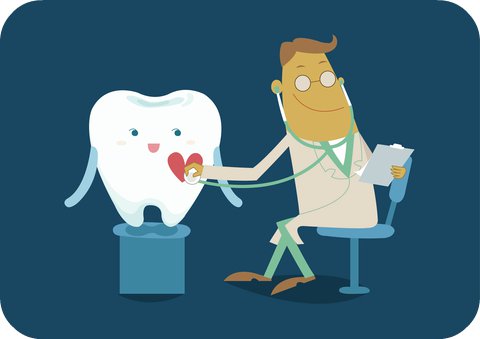
Dental Implants
Dental implant is an artificial root made of titanium metal. It is placed into the jawbone to replace the root of the natural tooth and then an artificial replacement tooth is attached to the implant. The implant acts as an anchor to hold the replacement tooth in place. Dental implants can also be used in conjunction with the denture fabrication to increase retention of the removable prostheses. Patients truly enjoy the freedom to chew and speak better when their dentures are securely placed on the hard and soft tissue.
When you decide to have an implant placed, your dentist may refer you to a specialist who has further surgical training in this area. They may be periodontists or oral surgeons who surgically place the implants into the jaw bone. After healing and integration of the implant, the dental prosthetic crowns are fabricated and inserted by the general dentist. We use some of the top-rated and most reliable implant systems in the world and their genuine implant restorative parts/kits as our material choice. Please ask us more about how dental implants can help restore your missing dentition.
Other helpful tips regarding dental implants:
♦ Several visits to your general dentist and/or other specialists may be needed until the treatment is completed.
♦ Routine follow up appointments are necessary to ensure long-term success.
♦ Good maintenance and care of the implant by the patient is crucial.
♦ Patient with certain medical conditions may not be a good candidate for dental implants.
♦ Although rare, possible complications include bleeding, infection, numbness or injury to nearby anatomical structures such as the sinus cavity and nerves. In some cases, the implant may not be successful because our body simply rejects the implant and the implant does not integrate successfully into the jaw bone.
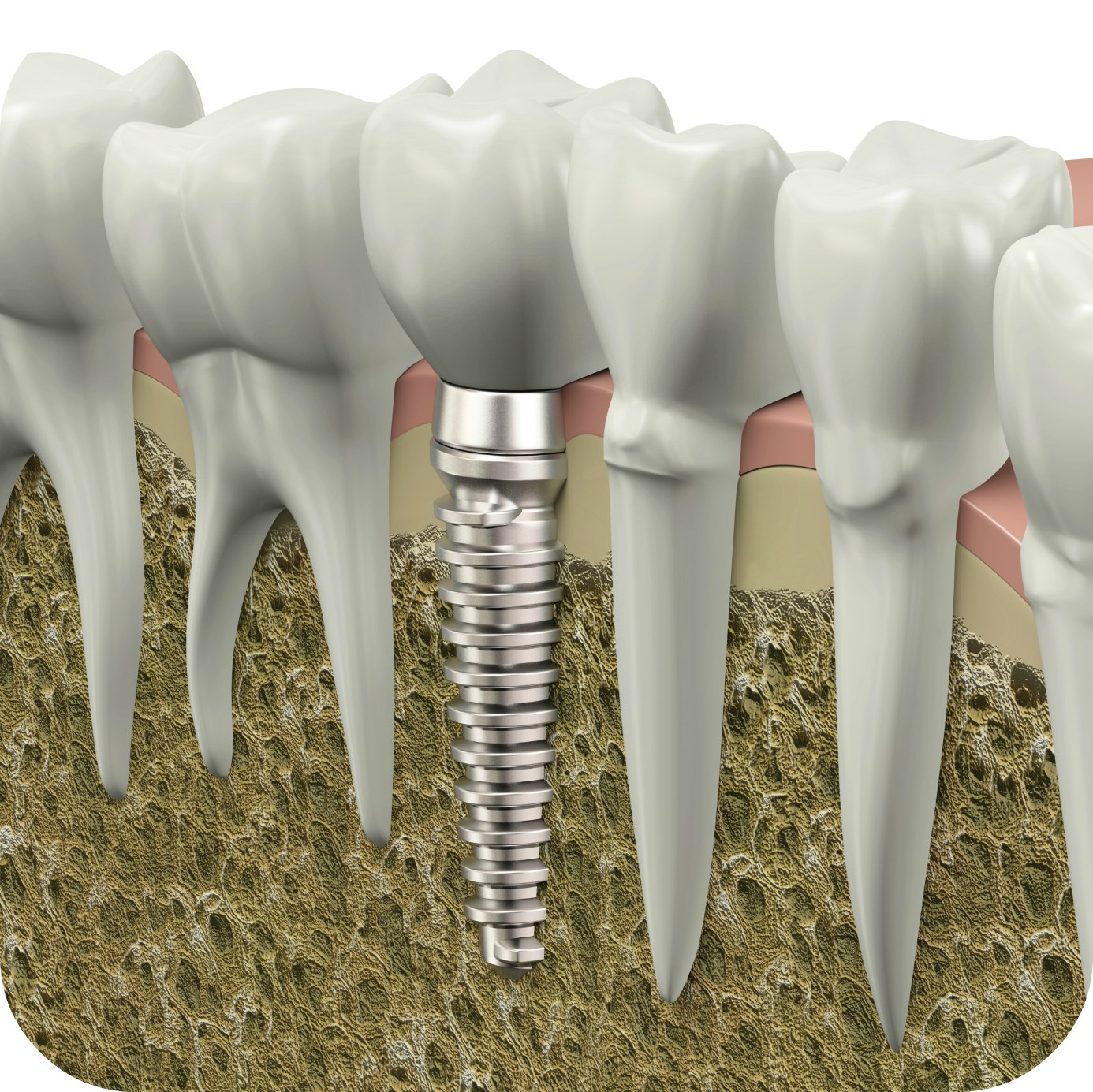
Occlusal Splints
Occlusal-related disorders are often difficult to diagnose as the presenting symptoms can vary widely. Once the cause of occlusal-related disorders is identified, this reversible and non-invasive therapy called the occlusal splint provides both diagnostic information and relief of symptoms without the problems that often accompany other approaches to care such as surgery and extended drug therapy.
The occlusal splints provide diagnostic information, allow muscles in spasm to relax, protect the teeth and jaws from the adverse effects of bruxism, and normalize periodontal ligament proprioception. They can also allow repositioning of the condyles and jaws into centric relation. A properly constructed splint facilitates a mutually protected occlusion. The type of splint utilized is dependent on the diagnosis. A careful medical and dental history along with a comprehensive examination is necessary for all patients, but especially those with facial pain, temporomandibular joint disorders (TMDs), or bruxism. Patients are typically asked to return for multiple follow-up visits for possible adjustments of the splint and monitoring progress. Please contact us for a consultation.
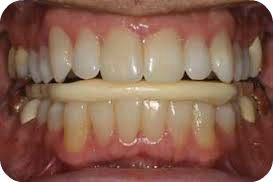
Sports Guards
If you participate in sports and other recreational activities that may cause trauma to the face, sports guards can protect your dentition minimizing the risk of broken teeth and injuries to your lips, tongue, face or jaw. They typically cover the upper teeth and are a great way to protect the soft tissues of the tongue, lips and cheeks.
When it comes to protecting your mouth, a sport guard or mouth guard is an essential piece of athletic gear that should be part of the standard equipment from an early age. In fact, studies show that athletes are 60 times more likely to suffer harm to the teeth if they’re not wearing a mouth guard. While collision and contact sports, such as boxing and ice hockey, are higher-risk sports for the mouth, you can experience a dental injury in non-contact activities such as gymnastics and skating.
It is recommended that the sports guards are custom made at a dental office for its best fit. Rinse before and after each use or brush with a toothbrush and toothpaste. Carry your mouth guard in a container so that it won’t be easily misplaced or lost.
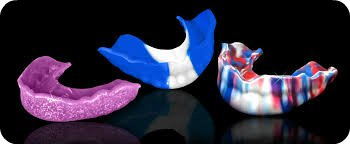
Tooth Extraction
Although permanent teeth are meant to last a lifetime, there are a number of reasons that tooth extraction may be needed. Some of the most common reasons are severe tooth decay, unrestorable teeth, trauma, unfavorable fracture, severe infection, crowding and malocclusion. The third molars, also known as the wisdom teeth, are often indicated for prophylactic extraction due to its likelihood of pericoronitis, periodontal defects and decay. Most extractions can be performed under local anesthesia. If you feel that deeper level of sedation is necessary for this procedure, you may be referred to an oral-maxillofacial surgeon whose facility is equipped to accommodate such deeper level of sedation.
Exodontia or tooth extraction is a very safe procedure when proper steps are followed. If you have a condition that puts you at high risk for developing a severe infection, you may need to take antibiotics before and/or after the extraction. When scheduling an appointment, let your dentist know your complete medical history, the medications and supplements you take currently and any allergies.
The initial healing period usually takes about one to two weeks. New bone and soft tissue will grow into the extraction socket. Over time, however, having a tooth (or teeth) missing can cause the remaining teeth to shift, affecting your bite and making it difficult to chew. For that reason, your dentist may advise replacing the missing tooth or teeth with an implant, fixed bridge, or denture.
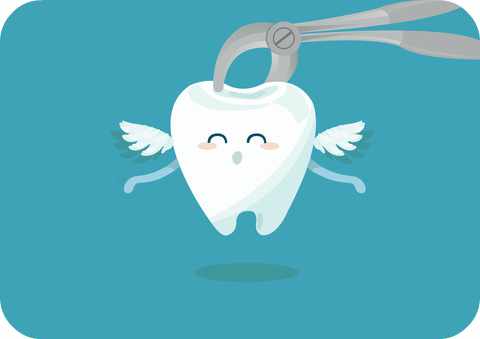
Removable Dentures/Fixed Over-Dentures
Dentures are artificial replacements for the natural teeth and gums. If there are only a few healthy teeth or none at all, dentures can be used to replace the missing teeth. There are 2 types of dentures, partial and complete dentures. They can either be conventional removable dentures or fixed over-dentures.
Partial dentures may be used when nearby teeth are not strong enough to hold a bridge, or when more than just a few teeth are missing. Partial dentures are made up of one or more artificial teeth held in place by clasps that fit onto nearby natural teeth.
Complete dentures are most often referred to as “false teeth” or “full dentures.” They are used when all the natural teeth are missing. Complete dentures are removable as they are held in place by suction. If you do not wish to be without teeth until the denture is ready, immediate dentures may be an option. On the day of the extraction, the immediate denture is placed in the mouth. During the healing period, your bones and gums go under remodeling thus requiring relines for a proper fit.
An over-denture is a removable denture that fits over the natural teeth left in your mouth or over dental implants. This greatly improves the retention of the denture so that you can enjoy your food better and you are not worried about using denture adhesives.
Dentures need to be cleaned every day just like natural teeth. Also make sure to visit your dentist regularly, at least once a year.

Emergency Treatments
Dental emergencies range from bacterial, fungal, viral infections to a fractured tooth or dental restorations. Pain may or may not involve in dental emergencies. Some of the common dental emergencies are uncontrolled toothache, fractures on the tooth (crown and/or root) or to the surrounding bone, locked open or closed jaw, trismus, orofacial pain, luxation, avulsion and dental abscess. Acute infection and abscess require immediate attention as well as the fracture of the alveolar bone and tooth luxation and avulsion to increase treatment outcome and prognosis.
Although some emergencies do not involve pain at all, you may have great cosmetic concerns about the appearance of your teeth and demand an emergency treatment on the basis of perceived social disability. Please do not hesitate to call us if you feel that your condition requires prompt attention by the dentist. You may call us after the office hours and your call will be directed to an appropriate personnel to answer your questions in a timely manner.
